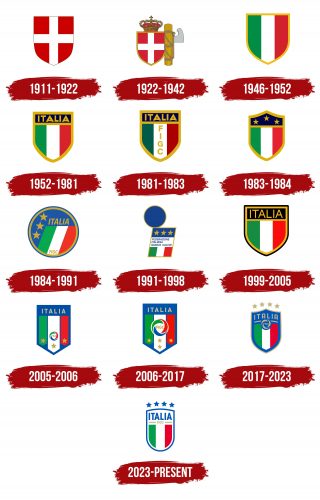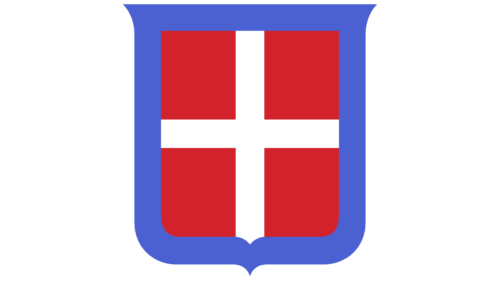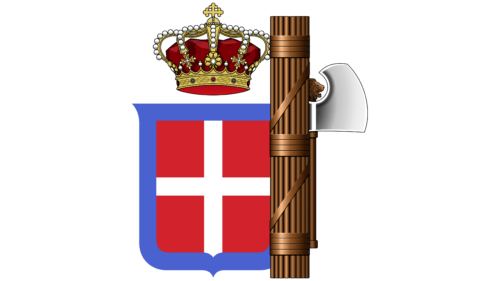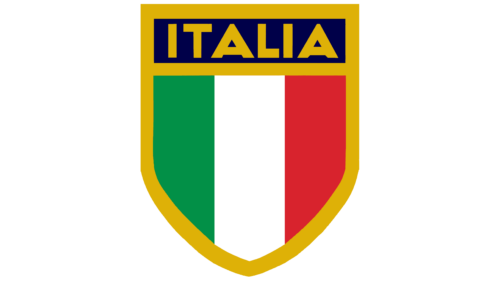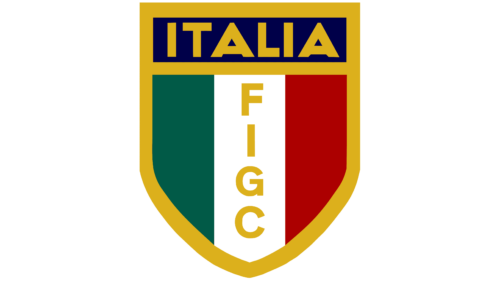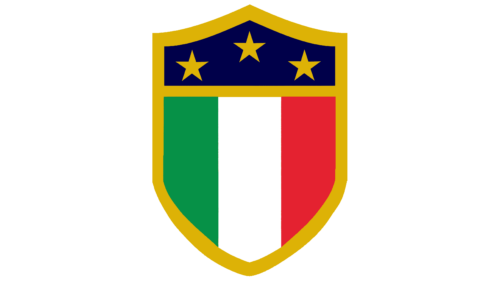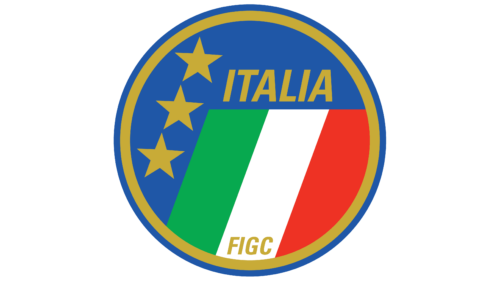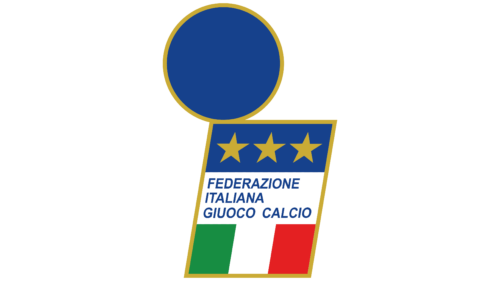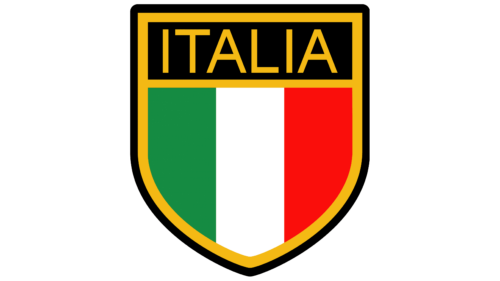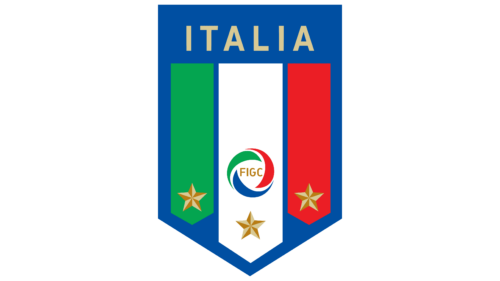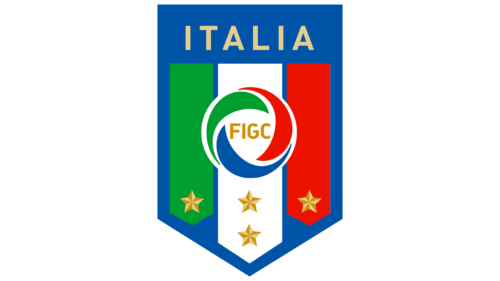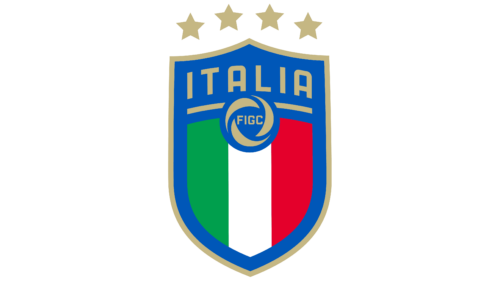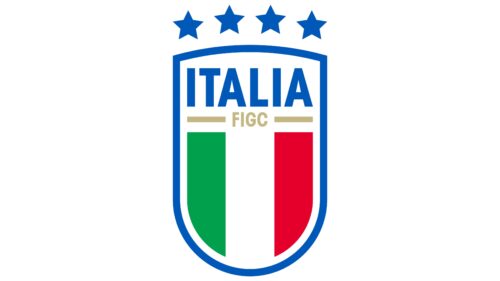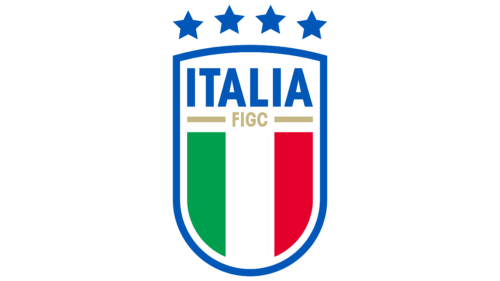 Italy national football team Logo PNG
Italy national football team Logo PNG
The Italy National Football Team logo is a symbol of victory. The emblem exudes confidence and celebrates the team’s achievements. Strong and bold lines convey the players’ refined technique and team cohesion, which helped achieve victory and glory in Italy.
Italy national football team: Brand overview
The history of the Italy national football team has had ups and downs. The team, nicknamed the Azzurri, performed well on its debut in 1910. In 1949, it made progress until most of its players died in a plane crash. The new composition did not perform as well as the original one. It got to the point that the fans began to throw rotten vegetables at the football players’ bus. Athletes could only rehabilitate themselves in 1968, having won the UEFA Euro.
The Italian national football team, a titan in international football, boasts an illustrious legacy with four World Cup titles and two European Championships. Known as the Azzurri, Italy’s journey in the football world began in 1910 with a resounding 6-2 victory over France.
Italy’s early foray into the World Cup scene saw them clinch their first title in 1934, overcoming Czechoslovakia 2-1 in the final, thanks to the legendary goalkeeper Gianpiero Combi. The triumph continued in 1938, with Italy defending their crown in France, defeating Hungary 4-2, and Silvio Piola netting twice in the final.
The post-war period brought challenges, with Italy’s performances in the 1950 and 1954 World Cups falling short. They even missed out on the 1958 tournament. However, the 1960s marked a resurgence, culminating in their first European Championship victory in 1968 against Yugoslavia, featuring stars like Giacinto Facchetti and Sandro Mazzola.
The Azzurri’s golden era under Enzo Bearzot saw them win their third World Cup in 1982 in Spain, defeating West Germany 3-1 in the final. Key figures such as Dino Zoff, Paolo Rossi, and Marco Tardelli were instrumental in this victory.
The 1990s brought a mix of highs and lows, with the 1994 World Cup in the USA ending in heartbreak. Despite Roberto Baggio’s stellar performance, Italy lost to Brazil in a penalty shootout.
In 2006, Italy again reached the pinnacle of world football, winning their fourth World Cup in Germany. They triumphed over France in a dramatic final that went to penalties, with Fabio Cannavaro, Gianluigi Buffon, and Andrea Pirlo leading the charge.
Following this victory, Italy faced a period of struggle, with disappointing exits in Euro 2008, the 2010 and 2014 World Cups, and a heavy defeat to Spain in the Euro 2012 final. Yet, resilience is a hallmark of the Azzurri. They bounced back at Euro 2020, held in 2021 due to the pandemic, winning their second European Championship, defeating England in a penalty shootout. Gianluigi Donnarumma was named the tournament’s best player.
Shockingly, Italy failed to qualify for the 2022 World Cup in Qatar. North Macedonia eliminated them in the playoff semifinals, their first absence since 1958.
Currently, Italy is navigating a generational transition with players like Gianluigi Donnarumma, Marco Verratti, and Federico Chiesa at the helm. As of August 2023, Italy ranks 6th in the FIFA rankings, maintaining its status among the world’s elite.
Italy’s football identity is marked by tactical prowess, solid defense, and a pragmatic approach. The Italian football academy has produced legends such as Giuseppe Meazza, Giacinto Facchetti, Dino Zoff, Paolo Maldini, and Andrea Pirlo. The Tifosi, Italy’s passionate fans, bring an electrifying energy to every match, making the Azzurri’s games unforgettable experiences.
Meaning and History
Previously, the Italy national football team used a logo based on the House of Savoy family crest. But then, she abandoned the original tradition to emphasize her belonging to Italy. This happened after the Second World War when the royal dynasty was expelled from the country. Since then, the emblem of the national team has been represented by a tricolor: green, white, and red stripes.
Since then, the design has been updated frequently. Stylized shields, circles, and rhombuses succeeded each other, acquiring various inscriptions and patterns. As the team won world championships, gold five-pointed stars began to appear on the logo—symbols of success, which football players are very proud of.
What is Italy national football team?
The Italy national football team is multiple winners of the European Championships and the World Cup, as well as the world record holder for the number of matches without defeat. No wonder this team is considered one of the best in football history. She successfully played her first official match in 1910: she managed to defeat France by a wide margin.
1910 – 1922
The first sports logo was the coat of arms of the House of Savoy – the rulers who unified and governed the Kingdom of Italy until 1946. The white cross on a red background symbolized the fight for Christian ideals. The symbol embodied purity, honesty, and courage. The team highlights these qualities and is ready to demonstrate them in competitions. The red background fills the logo with energy and strength, emphasizing the players’ tireless spirit.
1922 – 1942
The footballers’ emblem was enhanced with authority attributes. The crowned shield emphasizes the strength of the House of Savoy. The placement of the fasces—a bundle of rods tied with a ribbon—signifies that Italy’s greatness originates from Ancient Rome, where the fasces symbolized governance.
Football holds an important place in the country’s interaction with the world. Players receive patronage and blessings from the leadership. The footballers are seen as continuers of the proud traditions of brave feats and victories. When they take the field, they represent the nation. The axe with the fasces underscores their warrior spirit and readiness to fight for Italy.
1946 – 1952
In 1946, the monarchy in Italy was overthrown by the victory of the republicans. Therefore, the coat of arms of the House of Savoy was no longer used in the logo. The national team’s emblem is dressed in the colors of the country’s flag, emphasizing the fight for freedom. The red-green-white tricolor first appeared on the cockades of 18th-century revolutionaries and has since become established as Italy’s colors. The gold border around the emblem makes the symbol cohesive, highlighting the team’s unity with the people.
1952 – 1981
The logo includes a dark blue border around the shield and a blue stripe at the top with the inscription “Italia” to emphasize the team’s identity. Dark blue became part of the new coat of arms of the Italian Republic, symbolizing the vast seas. As a border color, it has long been featured on the standards of high-ranking individuals, including the president. This color also references historical heritage, being the color of the House of Savoy, which led to the use of blue uniforms for athletes even after the republic was established.
1981 – 1983
In 1981, the white stripe of the flag was adorned with the abbreviation of the governing body of Italian football – Federazione Italiana Giuoco Calcio. This marked the first time in 80 years since the organization’s inception that such symbols were included, highlighting the country’s dedication to revitalizing the sport. Foreign players were prohibited from joining the team, focusing on national football development. The new logo emphasized the country’s pride in the team’s achievements and the strong support for Italian athletes.
1983 – 1984
The logo design was changed after the World Cup victory to reflect the team’s achievements. The upper part of the shield was given smooth curves with an emphasized central rise. The emblem appears to soar into the sky, aiming for new successes. On the dark blue background, three stars replace the word “Italy,” symbolizing the World Champion titles in 1934, 1938, and 1982. The abbreviation of the football association is not used. The logo focuses on triumph without distractions from additional details.
1984 – 1991
The national team’s logo was transformed into a circle by echoing the country’s coat of arms and emphasizing the theme of victory medals. The blue background reflects the history and unification of Italy by the House of Savoy. The three stripes of the flag highlight national identity and the love of freedom among Italians. The abbreviation of the main governing body for football appears on the white stripe. Three diagonal stars commemorate the team’s victories. The inscription “Italy” unites all elements under a single heading.
1991 – 1998
The 1991 logo features a distinctive modernist design. The emblem is a lowercase “i,” hinting at the word “Italia.” The dot is enlarged to the size of a ball and appears to roll off the top of the glyph after a strike. The main line of the letter incorporates three key elements of the logo:
- The three World Champion stars
- The country’s tricolor
- The full name of the Italian Football Federation – Federazione Italiana Giuoco Calcio
The logo looks dynamic and retains essential information about the team.
1999 – 2005
The logo returned to its familiar shape. However, the dark blue elements were replaced with black, reflecting the country’s internal issues that led to a change in government. The dark shade also signified the absence of competitors capable of challenging the Italian team on the world stage. Strength and power are evident in the emblem, showcasing the ability to withstand pressure and maintain fighting spirit during tough times.
2005 – 2006
The logo concept has been changed to a pennant. The blue background serves as the foundation, representing the historical past on which the present is built.
The flag’s stripes are designed as individual epaulets adorned with stars. Each star symbolizes concepts important to the team and Italians: freedom and hope for a better future, purity and peace, love for the homeland, and patriotism.
At the center, on the white stripe, is a ball composed of a whirlwind of national colors with the abbreviation FIGC in the middle. The country’s name, the organization’s name, and the victory stars are highlighted in gold, emphasizing their significance.
2006 – 2017
Following another World Cup victory, the logo was revised to include a fourth star. The ball symbol was made larger to emphasize the national team’s importance in global football and to highlight Italy’s pride in its football players. This update celebrated their recent triumph and underscored the team’s prestigious position in the sport’s history.
2017 – 2023
The emblem design has improved, shedding its angularity. The shield’s smooth lines create a harmonious look. The four stars above the shield highlight the team’s achievements and victories.
The logo’s color scheme is balanced. The blue background, gold lettering, and ball details complement each other, forming a base for the bright elements that dominate the composition. At the bottom, the country’s flag is shaped like a second shield.
The emblem conveys the idea of leadership, representing a prominent team in football history with real achievements to be proud of.
2023 – today
The modern design appears more simplified compared to the previous one. The elegant shape of the emblem has been replaced with a simple oval, free of protrusions and sharp edges. The memory of the House of Savoy is preserved in the blue border and stars. This choice aligns with the team’s nickname, Azzurri. The country’s flag mirrors the logo’s shape. Gold remains only in the FIGC lettering and the adjacent line, symbolizing the division between the team’s past and future, marking the present as the golden age of Italian football.
Font and Colors
The font used in the Italy national football team logo shares many characteristics with the neo-grotesque Arial Narrow Bold. Robin Nicholas and Patricia Saunders designed it, and Monotype owns the typeface.
The combination of green, white, and red is a reference to the national flag of Italy. As for the other two colors of the emblem, they perfectly complement the tricolor. These include:
- gold – a symbol of success and strength;
- blue – the personification of fidelity, good fame, and honesty.
By the way, Savoy blue (also known as “Italian blue”) is the traditional color of the kit in which the athletes of all the Italian national teams play. Italy’s national football team even received the nickname Squadra Azzurra, which means “blue team.”
